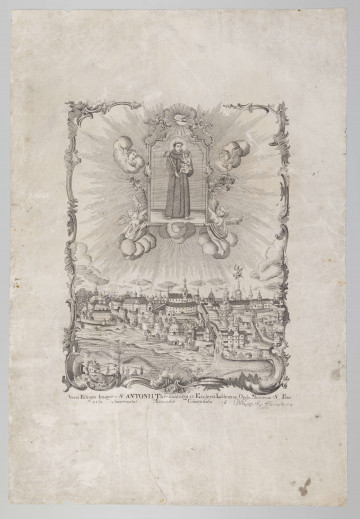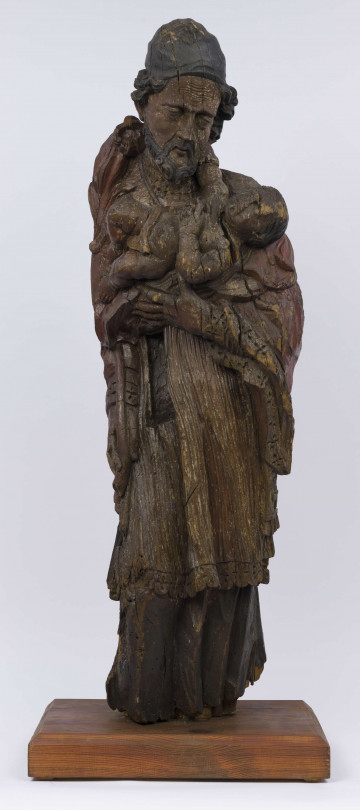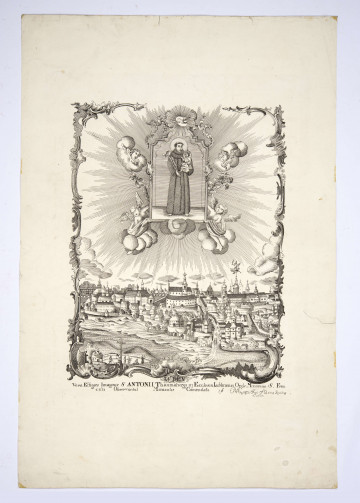
View of Lublin with the painting of Saint Anthony with the Baby Jesus
1774
National Museum in Lublin
Part of the collection: Folk Art of the Lublin Region (17th–1st half of the 20th c.)
St Anthony of Padua is considered by the inhabitants of Lublin as the patron saint of the city. Probably since the 17th century, when his image appeared on the Krakowska Gate. His cult was introduced by the Bernardines shortly after their arrival in the city in 1459. He also patronises other Polish cities, among others: Jasło, Brodnica or Rybnik, and European cities - Lisbon and Padua. Many parishes and churches all over the world have his invocation. He is considered the protector of lost persons and things, of Franciscan friars, Antonine sisters, children, miners, married couples, fiancées, midwives, the poor and travellers. In the popular culture St Anthony was called as an intercessor in case of infertility, in family matters, during cattle plagues. His iconography depicts him in a Franciscan habit with a hood, tied with a white cord with three knots symbolising the vows of poverty, obedience and chastity. In his hand he holds a lily, the symbol of innocence, and he often holds the Child Jesus in his arm.
St Anthony is associated not only with Lublin, but thanks to him Radecznica, a village in the Zamość poviat, was recognised as the Częstochowa of the Lublin region. This was due to an apparition in May 1664. The saint appeared on a hill called Łysa Góra to Szymon Tkacz, a poor inhabitant of the village, and asked him to build a temple. At first, a wooden cross was erected, under which the faithful gathered and the first miracles took place. Three years later, on the recommendation of Bishop Mikołaj Świrski, suffragan of Chełm, the Bernardine monks were located in the village, and in 1670 the monastery was granted a foundation charter. Radecznica soon became famous as a sanctuary in the area and the tradition of pilgrimages on 13 June started to gather crowds of pilgrims of Greek and Roman Catholic rites.
The greatest development of the pilgrimage movement, thus the growth of St Anthony's popularity and the fame of the village, took place in 1815-1869. In 1869 the monks were repressed for their participation in the January Uprising and had to leave the monastery. The buildings were initially given to Uniates, and in 1886 an Orthodox monastery was founded. Thirty years later the shrine returned to the Catholics, and in 1919 the Bernardine Fathers once again took custody of the Radecznica sanctuary and reactivated the cult of St Anthony.
Author / creator
Dimensions
cały obiekt: height: 44 cm, width: 50 cm
Object type
picture
Technique
painting technique
Material
canvas, tempera
Creation time / dating
Creation / finding place
Owner
The National Museum in Lublin
Identification number
Location / status

1774
National Museum in Lublin

1690 — 1710
National Museum in Lublin

1774
National Museum in Lublin
DISCOVER this TOPIC
National Museum in Lublin
DISCOVER this PATH
Educational path